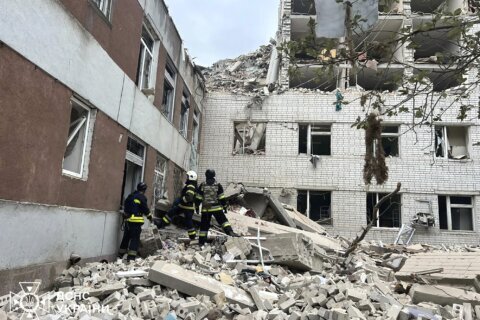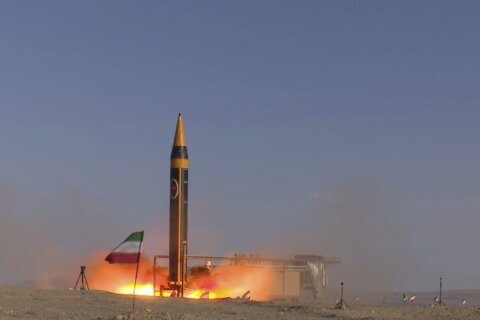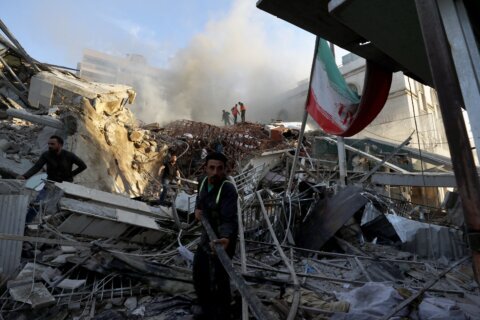J.J. Green, wtop.com
LOS ANGELES – Twenty million people are expected to fly this Thanksgiving.
Transportation Security Administration head John S. Pistole has one goal in mind: “To try to reduce the size of the haystack that a terrorist might be hiding in.”
Los Angeles International Airport will be a focal point for federal authorities.
“There will be more travelers going through LAX this holiday season than any other airport,” says Pistole.
Still haunted by how close Umar Farouk Abdulmuttalab came to blowing up Northwest Airlines 253 on Christmas Day 2009, the TSA and the FBI are leaving nothing to chance.
TSA is approaching the problem with a layered strategy that includes better use of intelligence and improved detection technology.
Steve Gomez, special agent in charge of the counter terrorism division of the Los Angeles FBI, says that haystack that concerns TSA extends well beyond the arrivals concourse at LAX.
“They’re not members of al-Qaida. They’ve never traveled to part of the world where AQ has a presence.”
But they’re just as dangerous.
“Because of the Internet they sympathize, and they start to believe in what AQ is trying to do,” says Gomez.
Los Angeles was never directly targeted during the Sept. 11, 2001 attacks, but the FBI has been on high alert ever since.
“I think that if you look at where core al-Qaida is now, they’ve been rocked back on their heels,” says Los Angeles FBI Assistant Director in Charge Steve Martinez.
But as al-Qaida elements controlled by the central leadership have been killed or captured, Martinez says “there are other emerging threats.”
Martinez recognizes the killing of Osama bin Laden was not the end of al-Qaida’s ambition. The organization’s franchises are now constant and growing threats to the homeland.
“Al-Qaida in the Arabian Peninsula,” says Martinez has established itself as an insidious threat.
“It’s obvious that they are intent to try to still do harm here in the U.S.”
There are more than18 million people living in the Greater Los Angeles area, including more than four million living in the City of Los Angeles.
“I was born in Los Angeles, right downtown at 16th and Hope St,” says retired FBI agent Frank Scafidi, who has seen it all. He says driving from one end to the other, it could take you “two hours or more.”
It is a target-rich environment.
“Los Angeles has everything from infrastructure, whether it’s freeways, shopping centers, entertainment hubs, Disneyland. It has all the things that people in homeland security, terrorism prevention and the intelligence world focus on,” he says.
With criminal gangs, international espionage rings and white collar crime, the FBI in Los Angeles is constantly busy.
An emerging threat is “the so-called sleeper people. That’s a reality in this world,” says Scafidi.
“You’ve heard them referred to as the lone wolf. That could be someone that’s home grown or someone that arrived in this country last week, last month, last year,” he says.
That’s what keeps Martinez up at night.
“That lone actor is the concern that we have, and the corollary to that is the ability for someone here to conduct small arms attacks.”
He’s seen the damage one can do.
“I think the situation in Norway indicates how devastating it can be, given just common weapons that are available on the street here or that can be legitimately purchased,” he says.
Gomez says there are plenty of candidates.
“They’re not members of al-Qaida. They’ve never traveled to parts of the world where al-Qaida has a presence.”
Scafidi says it’s hard to pick them out.
“Somebody who’s just sitting back and getting day by day, by day, agitated at what’s going on in the news.”
Martinez says there’s a segment of the population that is extremely vulnerable to Internet radicalization.
“Now it’s fairly easy to get on the Internet to look at those kinds of web sites, Inspire Magazine. It’s English. It’s a format that they’re familiar with and comfy with. It’s created a whole new challenge for us,” says Martinez.
He says they know what the FBI has to do.
“We have to redouble our efforts to do community outreach to make sure that those in the community are looking for those indicia of a major change in behavior that might indicate radicalized thoughts and radicalized actions,” Martinez says.
“Every Monday morning, I get a briefing from my national security chief,” says Andre Birotte Jr., the United States Attorney for the Central District of California, which includes the city of Los Angeles.
Birotte says it’s a sobering dose of reality.
“In more than one way, it’s sort of your sobering wake-up call early in the week, to realize what’s going throughout the region, what’s going throughout the district and the things we need to be mindful of.”
Birotte’s biggest concern is, “the lone wolf, the person sitting in the apartment complex getting radicalized by the Internet.”
As time passes, U.S. intelligence and law enforcement officials worry about the evolution of terror organizations, and the types of weapons they might concoct, but at the end of the day the Los Angeles has perhaps the most sophisticated weapon of all — people.
“We do rely on heavily on the public to give us some indication if you’re seeing something that doesn’t make you feel right,” he says.
Follow J.J. and WTOP on Twitter.
(Copyright 2011 by WTOP. All Rights Reserved.)







